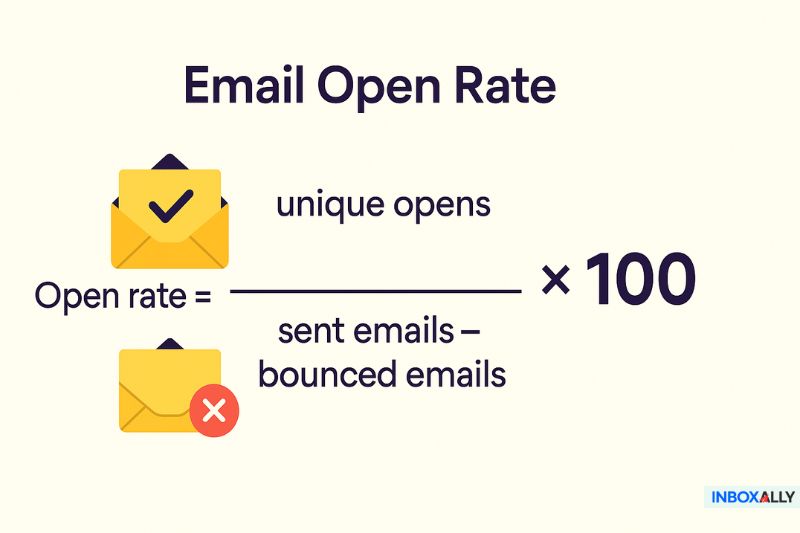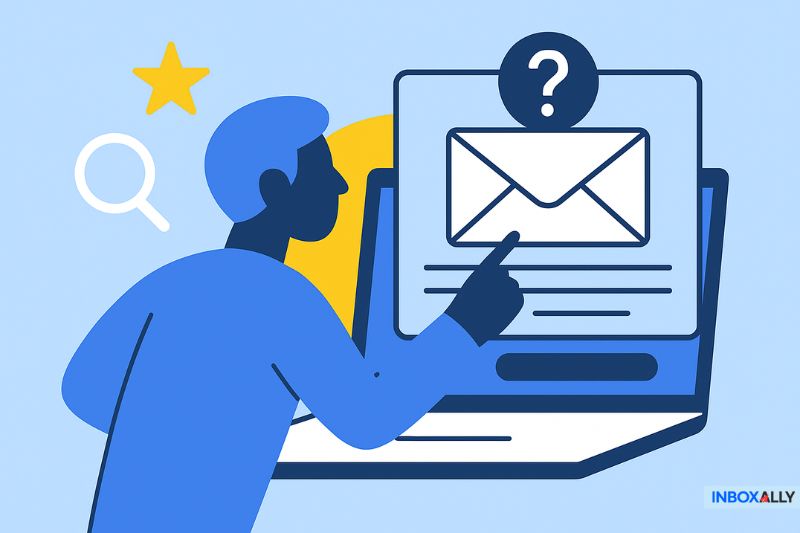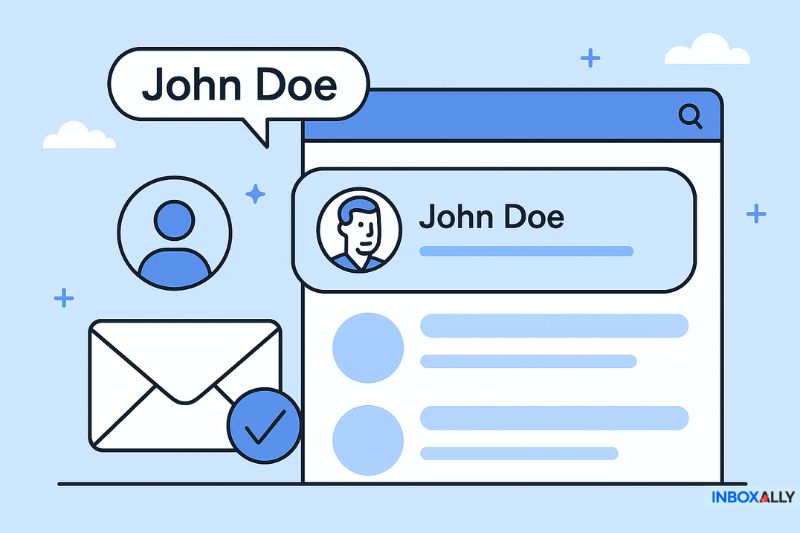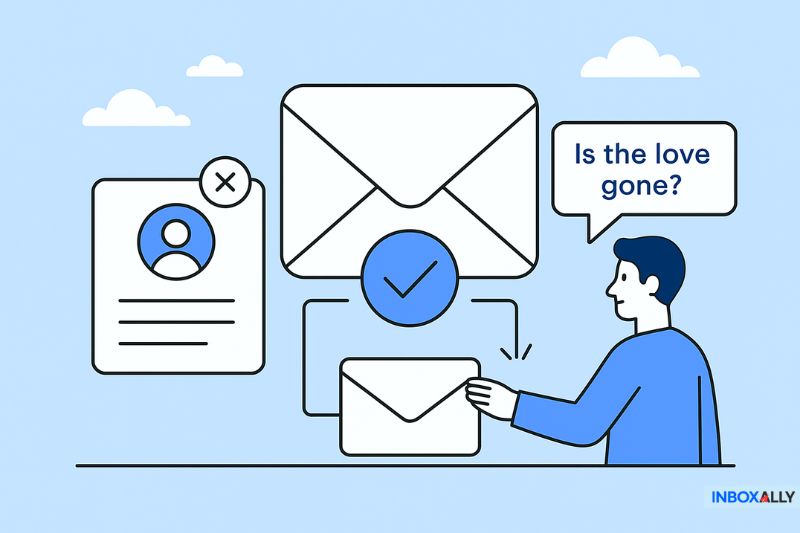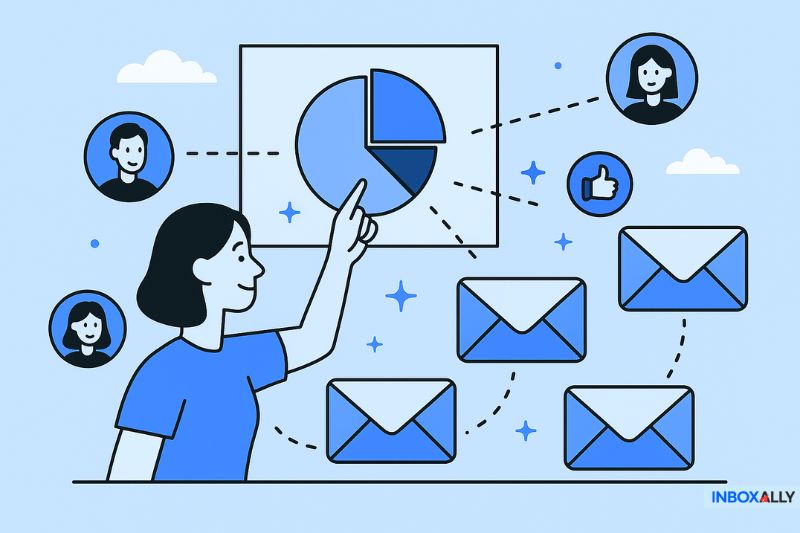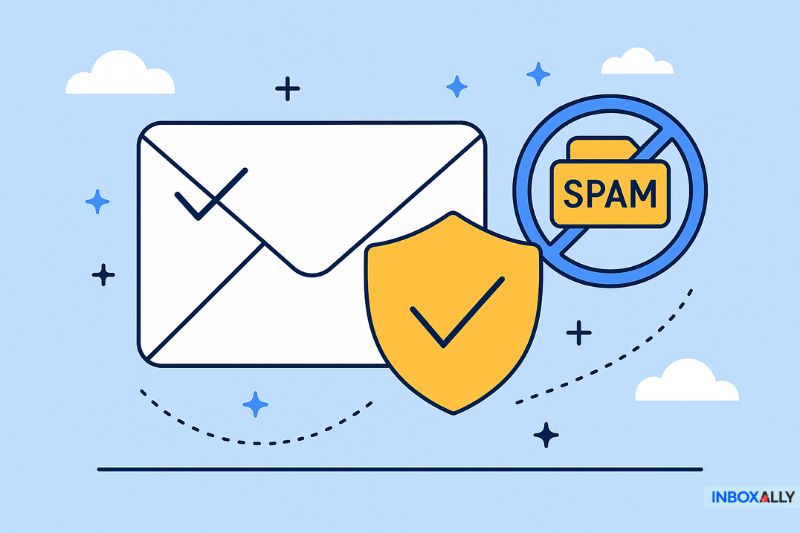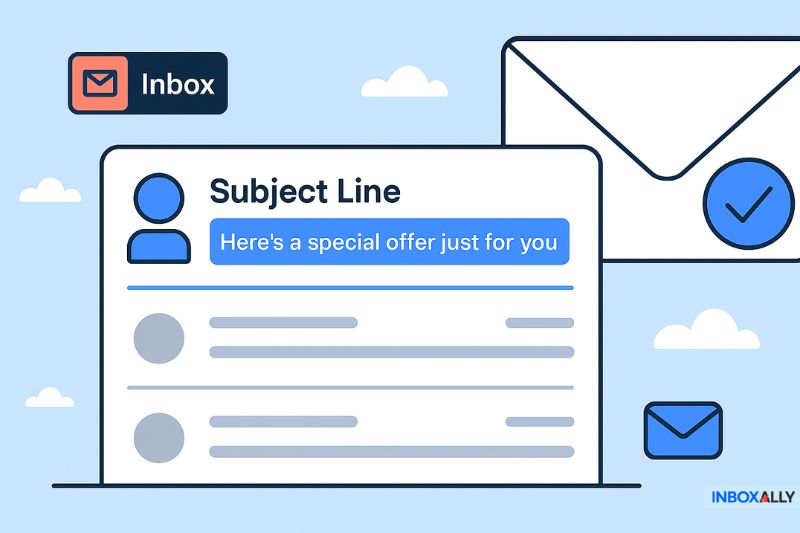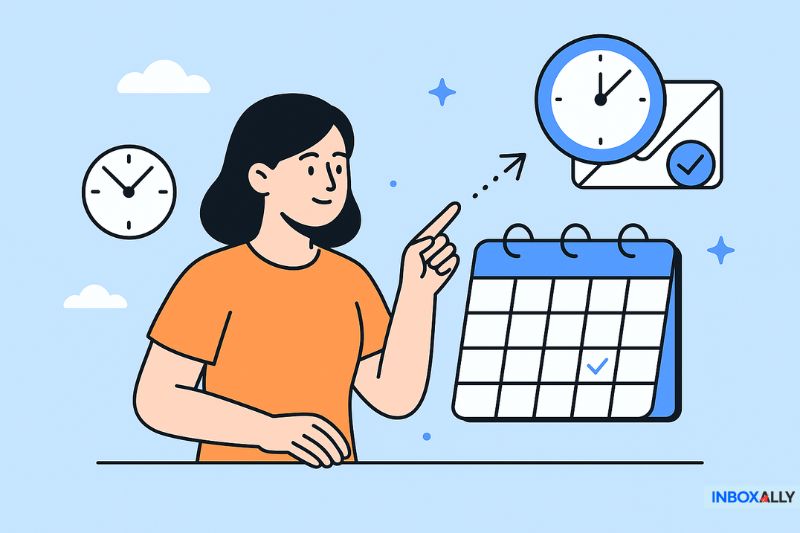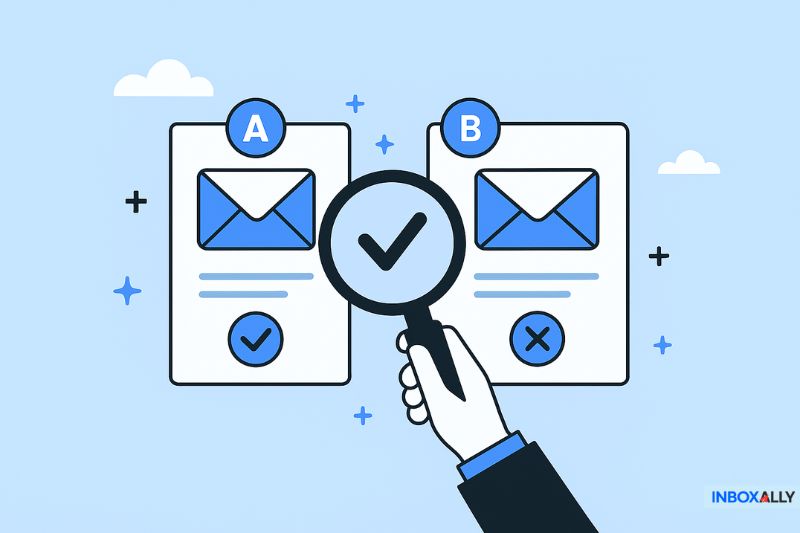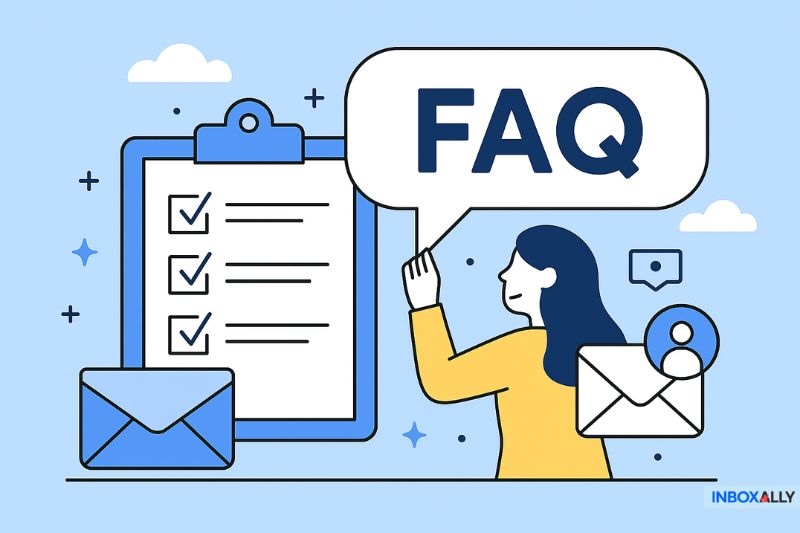Every inbox is crowded, and your email has just a split second to win attention. Open rates are the first sign that your message is actually getting through.
Low numbers don’t just mean fewer eyes on your content—they can be the culprit of problems with timing, subject lines, or even deliverability. In this guide, you’ll learn the strategies that’ll help you lift engagement and avoid getting buried in spam when connecting to your audience is crucial. But if you want the quick version, here are the key takeaways upfront.
Key Takeaways
- The best ways to improve email open rates include great subject lines, trustworthy sender names, and relevant content your audience can understand and trust.
- Segmentation, timing, and avoiding spam filters are some of the best tactics that lead to higher engagement and more clicks.
What’s a Good Email Open Rate?
![]()
Although every industry’s open rates will differ, here are a few averages from leading service providers:
- Constant Contact: 17.13%
- Campaign Monitor: 18.0%
- HubSpot: 20.94%
- MailChimp: 21.33%
- GetResponse: 22.15%
Depending also on the industry which you’re in, the overall average email open rate should be somewhere between 12 and 25%. Understanding the email marketing advantages and disadvantages can further help refine strategies to achieve better open rates.
For instance, if you’re in the health and beauty industry, the average open rate is 23.58%. However, if you’re in the food or restaurant industry, you should expect a higher rate (41.37%).
Note that this metric is not determined by the number of emails delivered but by the number of emails opened.
Here is how we calculate the email open rate:
Open rate = unique opens/(sent emails – bounced emails) x 100
Does it really matter?
Some marketers argue that open rates get more attention than they deserve and aren’t even an accurate measure of how many people read your emails.
Still, we believe they matter. If an email isn’t opened, what’s the point of spending time, effort, and money on the campaign?
At the end of the day, the end goal of your email campaigns is for people to click the call-to-action (CTA). If your email is opened and has higher engagement, the more significant your ROI will be. So, along with email open rates, click-through rates should also be closely monitored.
Now that you understand what a good email open rate is, you’ll have a better idea of how your campaign is performing. Let’s now find out the ways to increase open rates.
Gain insights into your campaign’s performance in real time with InboxAlly’s dashboard. Go here to start monitoring and optimizing!
11 Email Marketing Strategies to Increase Open Rates
1. Invest In Your Email Subject Line
Your email subject line is your hook to the audience, so it should be written in a way that sparks curiosity or urgency.
We bet you’re swamped with emails every day, and you probably don’t have time to open them all. Most likely, you’d click the ones that grab your attention right away.
That’s the same mindset to use in your email marketing campaign if you want to increase open rates.
But be careful—don’t rely on cheap tricks just to get opened. Bait-and-switch subject lines might work for a while, but they won’t hold up long term.
Worse, they damage your brand and show disrespect to your subscribers. In the US, deceptive subject lines are also illegal.
Tips for writing better subject lines include using odd numbers, placing key phrases up front, keeping it short, adding power words, building curiosity, asking a question, and going easy on punctuation or exclamation points.
2. Use a Personal Sender’s Name
Besides the subject line, the sender’s name is one of the most important factors in getting your emails opened. Adding personal details like a real team member or the company name helps build trust and shows transparency, unlike a “no-reply” address.
It may feel convenient for avoiding out-of-office replies or inbox clutter, but email marketing is built on mutual trust between sender and recipient. When the sender uses their own name, the message feels more personal—and far more likely to be opened. What sender name do you use in your campaigns?
3. Keep Your List Clean
If the recipient didn’t ask for your newsletter or isn’t expecting it, they’re unlikely to click or open your email. That often leads to higher spam complaints and unsubscribe rates.
That’s why you should keep your email list clean and focused on engaged subscribers. Periodically remove inactive subscribers or try to re-engage them with a win-back campaign. A smaller but active list is always better than chasing a large number of people who are no longer interested.
For example, HubSpot used this in their subject: “Should I Stay or Should I Go?” If you’re feeling gutsy, you may use the subject line “Do I bore you?” or “Is the love gone?” Removing those who don’t open your emails after the re-engagement campaign will help improve your open rate.
4. Segment Your Audience
It’s not easy to appeal to a broad audience. Imagine telling a story to ten people you know by name—you’d adjust details to suit each one. Scale that up, and it’s harder to keep everyone interested.
If half your audience finds the message irrelevant, they’ll likely tune out. The same thing happens in email marketing.
Segmenting your list helps increase open rates because you’re sending more personalized emails. Some marketers group subscribers by interests, pain points, or the content upgrade they signed up for. A skilled digital marketer also highlights the value proposition for each group to create an instant connection that makes subscribers feel seen.
Bonus tip: Segment by engagement or recent order activity rather than list size alone. For example, thousands may open your emails but never buy. Segmenting by product interest, gender, or location gives you more meaningful results.
5. Avoid the Spam Filters
Certain words can trigger the spam filter set by any email service provider. As such, it should be your top priority to be familiar with these words and find a way to outsmart them.
Email platforms are becoming increasingly strict, and users frequently encounter issues like Constant Contact emails going to spam, often due to content-related triggers, poor domain reputation, or improper email authentication settings.
Some words that can land your emails in spam folders and eventually affect your sender’s reputation include “free,” “special promotion,” “winner, “order now,” this is not spam,” and “cancel at any time.” Review your body copy carefully and use a conversational tone so your message feels authentic instead of forced.
You may suggest to your loyal customers that they whitelist you by adding your email address to their contacts or pay attention to phrases that set off a red flag when creating your preview text, subject line, and email content.
6. Take Advantage of the Power of an Email Preheader
Preheader text is considered to be the unsung hero of open rates. This is the sentence that appears in the inbox after the subject line.
You only get a few words here, but they can make a real difference. Just as you put effort into your subject line, give the same attention to your preheader. The goal is to make it work with the subject line, not against it. For example, if your subject line asks a question, the preheader can start answering it.
If you skip writing one, most email providers will auto-fill it—but that’s rarely the message you want to showcase.
7. Make Your Email Mobile-Friendly
You can’t overlook mobile users if you want higher open rates and better deliverability.
Keep subject lines short, and design emails in a single-column format under 600px wide for easy reading. Use smaller images to reduce load time, and don’t assume they’ll always display—Android, for example, disables images by default. Make sure your email still works without visuals by adding alt text.
8. Write Your Email in a Personal Tone
Every inbox contains both personal and marketing emails, and recipients may subconsciously filter them.
To improve open rates, write your emails in a personal tone. This keeps them out of the trash. You can also include people’s pictures to build a stronger connection and humanize your message. These work well not just in emails but also on homepages, contact pages, and social profiles.
9. Find the Optimal Time to Send Your Emails
You could be using the perfect subject line, but if you’re not sending on the right day of the week or time of day, you may still have a low email open rate.
Generally, the optimal time of day to send a message to your email subscribers is 10 AM in your recipient’s time zone. But if you look deeper, the type of content you’re sending matters too, as well as the recipient’s occupation, age, and location.
For example, hobby-related emails may be checked before work, but work-related emails are more likely to open during work hours.
So, think carefully about your timing. You won’t be able to figure this out immediately, but by doing some A/B test, you can determine which timeframes your emails perform best and use that in future campaigns.
Timing is key in email marketing. With InboxAlly, control the opening time window for your emails to hit the inbox at the perfect moment. Start optimizing your send times now!
10. A/B Test Different Subject Lines
Speaking of the A/B test, this guide on how to increase email open rates of your email campaigns won’t be complete without encouraging you to A/B test your campaign.
Running A/B tests is one of the most exciting and efficient methods to achieve email marketing success. Compare your email subject lines to know which converts better with a particular group of audience. Often, personalized subject lines have better results.
Did you also know the number of characters you use in your subject line matters? Yup. The excellent balance is somewhere between 25 and 30 characters.
Ready to go further? Here are 30 email marketing tips from experts across industries, plus a look at some of the top blogs that can give you fresh strategies to refine your approach.
11. Check Your Sender Reputation
Your sender reputation is like a credit score for your email program, shaping how email service providers (ESPs) handle your messages. A solid reputation means your emails are more likely to bypass spam filters and reach inboxes.
To maintain or improve it, regularly track bounce rates, complaint rates, and engagement metrics.
This is where InboxAlly can help you monitor your sender reputation, spot issues early, and fix problems that might lead to blacklisting or poor deliverability. Remember, keeping your reputation healthy is key to making sure your emails consistently land where they should.
You Can Reignite Your Open Rates!
There you have it! We’ve shared ways to increase your email open rates, and we hope these tips help you make better decisions for your campaigns.
Here are the key points to remember:
- Subject lines play the biggest role in open rates.
- Segmented lists consistently see higher open rates.
- Writing as if you’re addressing just one person makes your emails feel more personal.
- Optimize your campaigns for mobile devices.
- Send at the right time to maximize engagement.
FAQ: How to Improve Email Open Rates
About the Author
Darren Blumenfeld — Founder & CEO
Darren is the Founder and CEO of InboxAlly, an industry-leading email deliverability tool. A veteran in email marketing, he also founded HonestMail, the first commercial platform to integrate Amazon SES. With an MBA from Columbia University and an engineering degree from Tufts, Darren blends technical expertise with business strategy to help companies boost their email performance. Outside of work, he’s a musician and comedian who has performed at the World Series of Comedy in Las Vegas.
Are you searching for an email deliverability tool to increase your open, deliverability, and conversion rates? Give InboxAlly a try!
